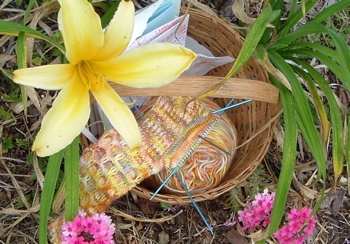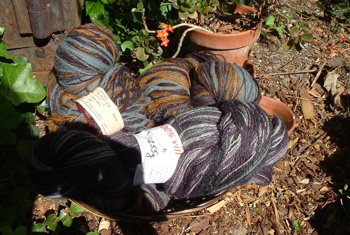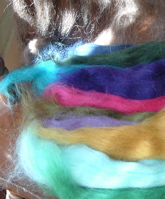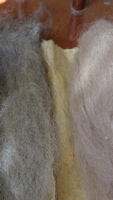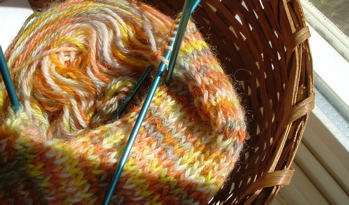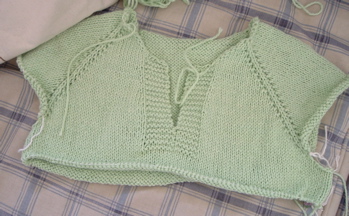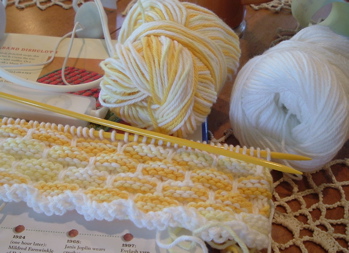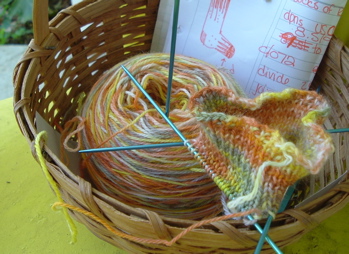It’s raining finally! Hoo-ray, rain! It makes for great knitting weather and when it stops, you can dig holes for plants in places where digging was previously Impossible (I’m serious, the yard is like a rock). The weather radio is saying things about Severe Thunderstorm Warnings.
I got the sock leg pattern worked out thanks to the dishcloth.
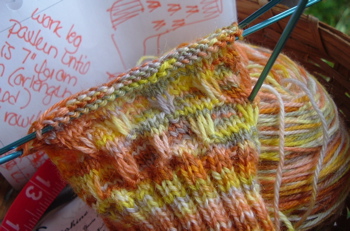
See why I wanted to change the ribbing in the final version?
I am sure I am not the first person who has used slipped-stitch patterns to deal with variegated yarn, but it still made me feel good when the light bulb went off. In my first try, the slips weren’t long enough for the look I wanted and I wanted them to alternate rather than make columns down the sock leg. I like the smocked look the leg has (this will stretch out when you have the sock on).
The sock pattern now goes like this:
**Added 4/22/2006: You can print out the complete HayStack Socks pattern here!**
Gauge: 9sts=1″ for an 8″ width (relaxed) OR 8.5sts=1″ for an 8.5″ width (relaxed)
Needles: With this yarn I’m using a set of 4 US size 0 double pointed needles (your mileage may vary)
Notes: In the leg pattern, the purl stitches are made into large loops by wrapping the yarn three times around the needle during purling. When you come back around, drop two of the loops made by wrapping off of the needle leaving one very loose slipped stitch. It looks messy, but it will all work out.
Slip leg stitches purlwise with the yarn held in back.
K = knit, P = purl, S = slip
Cuff:
Cast on 72 sts, divide evenly onto three needles (24-24-24), join (without twisting) and work in *K2, P2* ribbing for 1.5″
Begin Leg Pattern
Round 1: *K2, (P1 wrapping yarn three times) twice, K2, repeat from * to end of round
Round 2: *K2, (S1 dropping 2 of the wrapped loops off of the needle) twice, K2 ,repeat from * to end of round
Round 3: *K2, S2, K2, repeat from * to end of round
Rounds 4, 5, 6: Work as round 3
Rounds 7, 8: Knit all stitches
Round 9: *P1 wrapping yarn three times, K4, P1 wrapping yarn three times, repeat from * to end of round
Round 10: *S1 dropping 2 of the wrapped loops off of the needle, K4, S1 dropping 2 of the wrapped loops off of the needle, repeat from * to end of round
Round 11: *S1, K4, S1 repeat from * to end of round
Rounds 12, 13, 14: Work as round 11
Rounds 15, 16: Knit all stitches
Repeat the 16 rows of pattern until the sock leg measures about 6.5″ (this should be around 5 repeats – don’t quote me on that) or length desired, ending with row 16.
If you’ve got questions, comment or email. I am going to work on my Honeydew Top. I’m almost to the side shaping.


